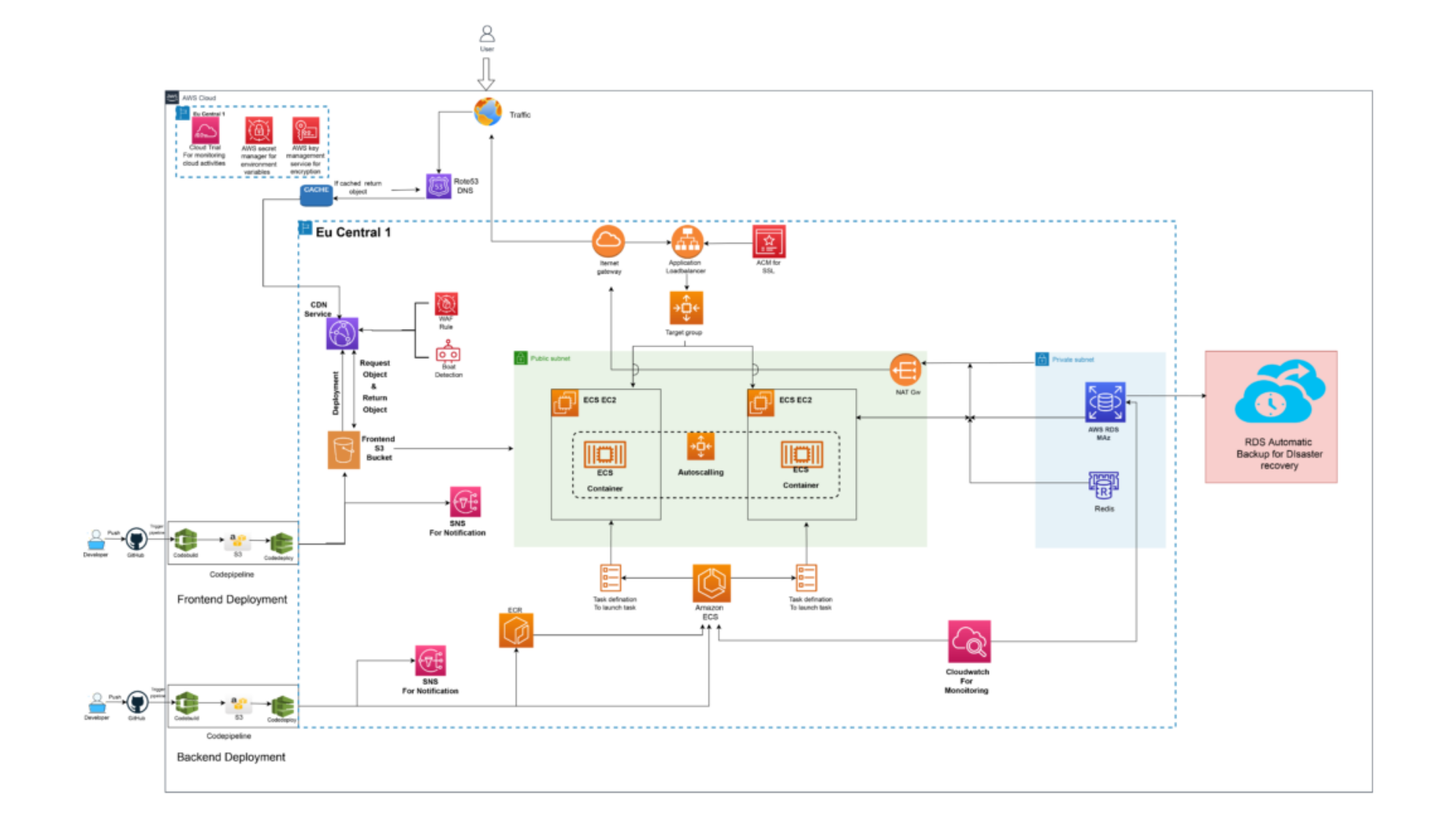Download the case study
A live auction platform that combines live video shopping with live auctions
Category: Sports, Entertainment
Services: Headless CMS, Ecommerce Development

- Boosted conversions
- Improved engagement rate by 5%
- Increased the revenue by 60%
- Helped in increasing the user base
- Built a highly scalable and stable system
About Gavel
Gavel is a live auction platform that brings collectors, buyers, and sellers together. Gavel combines live video shopping with live auctions to add fun and discoverability to online purchasing. Gavel allows you to chat in the Gavel app with like-minded people in the virtual room, ask questions during the show, and bid on your favorite items directly.
Challenge
- Limited global accessibility
- Lack of insights from data.
- Friction in the sign-in process
- No updates to users for live shows.
- No system that can scale up or down according to the business requirements.
- A less complex and easy to manage infrastructure was required.
- Wanted an auto-scalable infrastructure.
Solution
- Increased the payment options:
Although the client was satisfied with having a single payment option(Paypal), our team suggested the client go with multiple payment options. Gavel’s idea had a global appeal. Gavel sells collectibles like Pokemon cards which have a high global appeal. This is because Pokemon was a very popular series that is a part of the childhood memories of an entire generation. Thus there are many people across the world who would love to take part in purchasing collectibles sold by Gavel. However, if there is a single payment method, people from many countries might find it difficult to purchase from Gavel. Our expert team foresaw this issue and integrated a complete payment module with wallet, Google pay, apple pay, giro pay, eps, and card payments. Earlier whoever won the auction had to pay after the auction was finished. There were instances when users denied paying after winning the auction and Gavel had to re-auction the item. This significantly impacted the revenue of Gavel. To resolve this issue our team created a wallet in which the users had to deposit a certain amount. The payment was automatically deducted from the wallet of the user who had won the auction. This way we eliminated the problem non-payment and helped Gavel boost its revenue by 60%. Another thing we did to increase the user base was to suggest the client create a web interface. Many people prefer the web interface over the mobile one. As Gavel was focused only on building mobile apps, it was missing the opportunity of interacting with web users - Provided detailed analytics:
Our team helped Gavel perform detailed analytics on the data it collected regarding its users. We Integrated mParticle, a customer data platform (CDP) that helps Gavel collect and connect its user data to hundreds of vendors without needing to manage multiple integrations. Using mParticle, Gavel could analyze the areas where its users spend their time. This helped Gavel boost its conversion rates. - More ways to sign-in:
One way to reduce the entry barriers to the application was to reduce the friction in the sign-in process. Gavel’s team was satisfied with a single sign-in option with the phone number of the users. However, the issue with having a single sign-in option is that it limits the ability of the users to sign in using different options. To overcome this hurdle, our team suggested multiple sign-
in options like signing in with Google and Apple ids along with the mobile number. Thus, we helped Gavel boost the number of sign-ins. - Integrated push notifications:
The original idea did not have any mechanism to notify users regarding live events. Our team resolved this glaring mistake by integrating push notifications. It is a proven fact that push notifications help brands engage users and remind them of the brand’s existence throughout the day. The push notification feature helped Gavel engage with its users by sending them regular updates. - Built a scalable and stable system:
The client wanted to build a scalable system to cater to their future requirements. Along with scalability, stability was also required as the system should not break down while conducting live auctions and other events. Our expert engineering team suggested an ECS EC2 based containerized managed service to overcome the service stability and autoscaling challenge. We
configured a load balancer. The result was that the deployment became smooth with zero downtime.
Our DevOps engineers integrated a load balancer into the architecture to make the system auto scalable. To make the system resilient for future needs, our DevOps team moved from monolith to a microservices based architecture. Our DevOps experts introduced CI/CD into the architecture of the platform so as to remove any human intervention in code deployment. We used the AWS code pipeline to do this. We also integrated AWS SNS service to notify when the code is approved for production deployment. - Hassle-free Infrastructure management:
Our expert Devops engineers opted for AWS managed service in the form of ECS, effectively relieving the client from the hassle of managing web servers and certificates.
Architecture Overview

AWS Services
- Amazon Route53: We used Route53 in this project for the DNS management of our project, which connects user requests to internet applications running on AWS.
- AWS Certificate Manager: We used AWS certificate manager to easily validate our domain for Secure Sockets Layer/Transport Layer Security (SSL/TLS) certificates and configured it with our load balancer(Backend) and
CloudFront service (Frontend) for secure & encrypted communication. - Amazon Cloudfront: Amazon CloudFront is the service that we use to speed up the distribution of static and dynamic web content, such as. HTML, CSS, Js and image files to the Gavel users.
- Amazon ECS: The client wanted a scalable and stable solution, so we proposed an ECS(EC2-based) system where we deployed our backend application. With Amazon ECS, the deployment was easy, with zero downtime.
- Application Load Balancer: ALB supports advanced request routing features based on parameters like HTTP headers and methods, query string, host, and path-based routing of incoming traffic across multiple targets that we configured
with our application. It also enables us to provide the auto-scaling feature. - Amazon S3: With features like industry-leading scalability, data availability, security, and performance, we used it to store and retrieve data for frontend and backend applications.
- Amazon RDS: With the features of RDS, like easy management, scalability, reliability, and a backup mechanism, we configured our MySQL database.
- Amazon Elasticache for Redis: We use a fully managed caching platform that makes it easy to deploy, manage, and scale our application’s high-performance distributed in-memory data store cluster.
- AWS CodePipeline: AWS Codepipelineis a fully managed continuous delivery service that helps us automate our release pipelines for fast and reliable applications and infrastructure updates.
- Amazon SNS: Amazon Simple Notification Service (Amazon SNS) is a managed service that we use for message delivery from different services like CloudWatch Alarm for alerts, push notifications, and Codepipeline deployment notifications at different stages. Apart from sending push notifications, the Amazon SNS service also helps us monitor whether the process is running smoothly or not.
- AWS CloudTrail: AWS CloudTrail enables auditing, security monitoring, and operational troubleshooting by tracking user activity and API usage. The AWS CloudTrail logs, continuously monitors, and retains account activity related to
actions across our AWS infrastructure, Thus giving us control over storage, analysis, and remediation actions. - AWS Secrets Manager: TWe use AWS secrets manager to ensure secure storage and transition of our environment variables like database credentials, API keys, and other sensitive data.
- Amazon CloudWatch: We use it to monitor and manage our services by configuring alerts for unwanted behavior, storing our application logs and application build stage logs, and providing actionable insights for our applications and infrastructure resources.
- AWS WAF: Web application firewall that we use to monitor the HTTP(S) requests forwarded to our web application resource Amazon CloudFront distribution just to avoid any malicious activity


